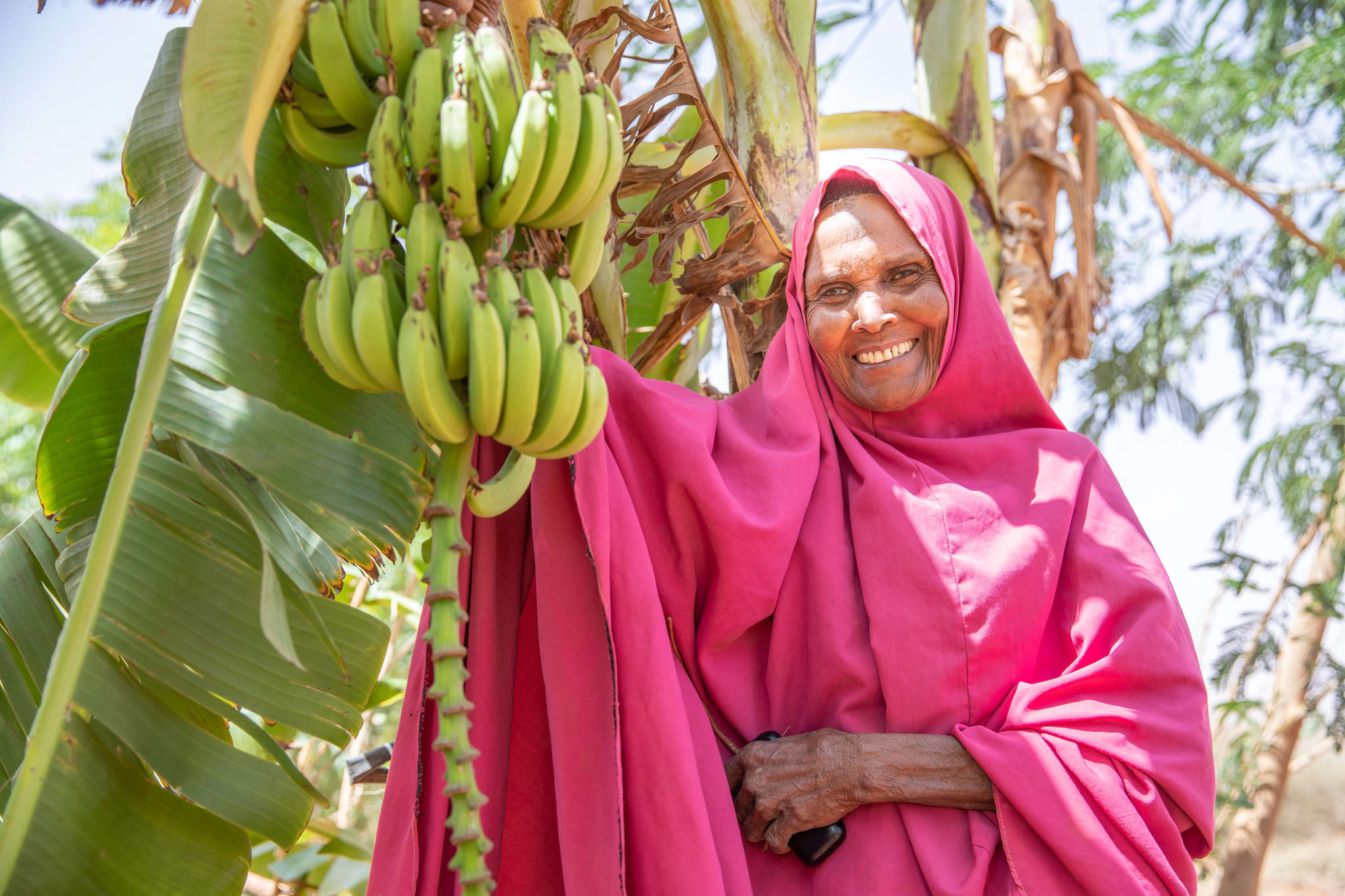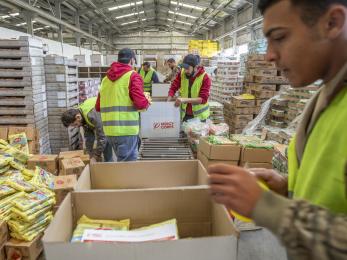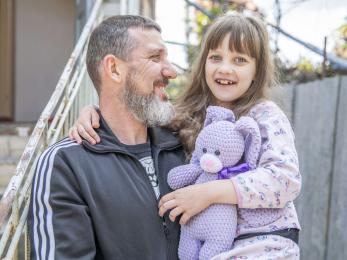The long journey home for Somalia refugees
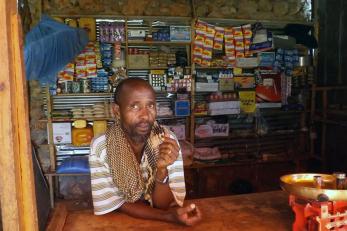
Civil war raged in Somalia for more than two decades, beginning with resistance in the late 1980s. After President Siad Barre was overthrown in 1991, years of widespread fighting forced hundreds of thousands of people to flee their homes.
Things are starting to look up in Somalia — a new, more peaceful government was installed in 2012 — but for refugees of the longstanding civil war, new challenges await.
During the height of the fighting, many Somalis fled to the sprawling Dadaab camp in Kenya, which was originally established to house about 90,000 refugees. Now, it’s the largest refugee camp in the world — more than 330,000 refugees, mostly Somalis, live there, waiting for a chance to return home.
Some have waited for decades in the camp, including 43-year-old Mohamed Farah. His journey has taken him from Somalia to Kenya and back again — but it hasn’t been easy.
Below, learn about his experience, and how Mercy Corps is helping refugees like him finally find their way back home.
Fleeing for safety
Mohamed was just 20 years old when he decided to flee his hometown of Kismayo with his wife and two children. His father owned a large farm on the outskirts of town, and Mohamed was a budding young entrepreneur, running a small shop in the city.
But it was 1993, and when the fighting reached Kismayo, the young family knew that in order to survive, they would have to make the long trek to neighboring Kenya to seek asylum. They walked for days through barren and often dangerous land — nearly 300 miles before reaching the camp.
“The journey to Kenya was exhausting,” says Mohamed. “When we arrived, we registered and received shelter, food and water. We were happy and grateful for a basic support.” They’d made it across the border successfully, and planned to stay in the camp for only a few weeks.
Life at Dadaab
For the next 20 years, the Dadaab refugee camp was home to Mohamed, his family and countless other Somalis who fled the civil war. The few weeks they had planned to spend there quickly turned to months, and months turned into years.
“Life in the refugee camp was not easy,” says Mohamed. “I struggled to make ends meet in order to provide for my family. We had limited access to food, water, and basic services like hospitals and education due to the overcrowding.‘’
Refugees are not allowed to travel outside the camp, so Mohamed had to find odd jobs in Dadaab to earn any income — he worked as a watchman or gathered firewood to sell when he could.
“One of my biggest challenges was that sometimes, when I could not find work for two or three days, and I returned home to my family barehanded, the life in the refugee camp became very hard,” says Mohamed.
A chance to return home
But finally, in 2012, a new national government was put in place, bringing some stability and peace to areas that were once marred by conflict — including Mohamed’s hometown of Kismayo.
With that new stability came hope for the hundreds of thousands of Somali refugees, like Mohamed, that they might be able to finally return home.
In late 2013, those dreams started to become a reality. An agreement was signed in November 2013 by UNHCR and the governments of Somalia and Kenya to govern the voluntary, safe and dignified return of Somali refugees living in Kenya. Mohamed volunteered immediately to go with his family back to their hometown of Kismayo.
“The life in the refugee camp became intolerable for our minds, souls and hearts,” says Mohamed of wanting to return home. “I was waiting for sufficient peace and stability to go back to Somalia.”
Taking the first step
Mohamed and his family waited patiently for a year before the day finally came to begin their journey back home. In January of this year, they packed up their belongings and their ten children and retraced their steps from Dadaab back to the Somali border.
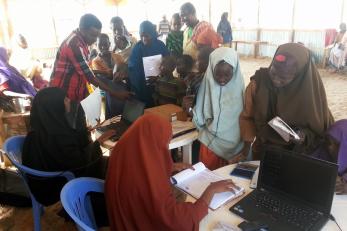
“The journey took us three days. Buses were arranged for us up to the border of Somalia. Then we stopped over for a night at the border, where we received some money to continue our trip,” says Mohamed.
Their next stop would be the Kismayo Way Station, run by Mercy Corps in collaboration with UNHCR. The Way Station offers returnees like Mohamed and his family the information and support they need to have a safe and dignified transition into a new life in Somalia.
At the Kismayo Way Station
To help them recover after their long journey, returnees like Mohamed are hosted at the Kismayo Way Station for one night. Once they arrive, they receive a hot meal, water and any emergency medical assistance they might need.
But returning to life in a country that’s been ravaged by civil war comes with challenges. The passage of time and the effects of conflict have changed Somalia. At the way station, returnees receive important information about the journey and the situation in the areas they’re going back to.
Mercy Corps staff map out where returnees like Mohamed can now find hospitals, schools, markets and other vital services in their hometowns. We refer them to partners that can help with housing and land issues, and encourage them to enroll their children in Mercy Corps’ rehabilitated schools in the area.
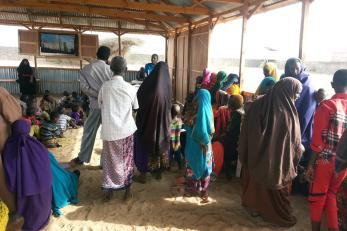
Before the returnees leave the way station, they are given a package to help them transition back to life in Somalia. The package includes basic household items, food rations to feed the family for three months, and a cash start-up grant (up to $600 USD) to help them establish a business or get by until they can find work.
Home in Kismayo
Once Mohamed and his family received their supplies, they made their way to their new home in Kismayo. After being forced out of their country more than 20 years ago, Mohamed and his family are finally resettled in their hometown of Kismayo, Somalia.
Because of the war, the landscape of the town has changed drastically. “We knew we would not find our old house in Kismayo,” says Mohamed. “But thanks to the items received at the way station, we were not worried about shelter and food for the first few months of our stay.”
Mohamed used the money from his start-up grant to invest in a small kiosk in the center of a village in Kismayo. He sells small items there and is able to take home a profit of $8-12 USD every day.
The Farah family now has a stable life in their home country — Mohamed’s once far-fetched dream is now a happy reality. They are grateful for the help the way station provided on their arduous journey.
Mohamed’s ten children attend school nearby while their father tends his shop. They will grow up in their own community, not as refugees, but as true citizens of Somalia. And that’s all Mohamed ever wanted.
